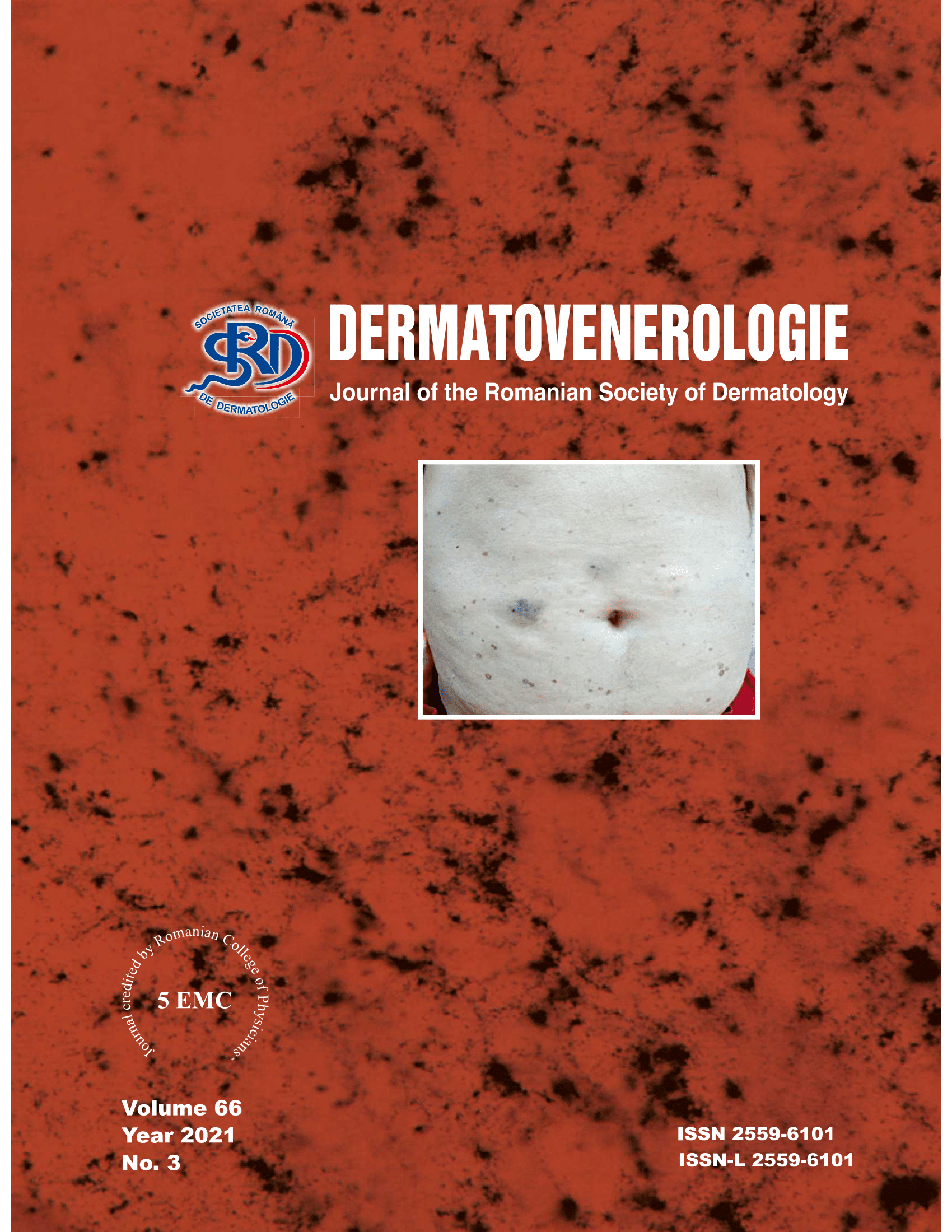Summary
Cutaneous squamous cell carcinoma is the second most common malignant tumor of the skin. Its development is closely linked to the patient’s cumulative exposure to ultraviolet radiation through a mechanism that combines DNA damage with immunosuppression. The retrospective observational study included 38 patients diagnosed with squamous cell carcinomas (SCC) diagnosed histopathologically in the period 2015-2019 in the Dermatology Clinic, Emergency County Clinical Hospital “St. Spiridon”, Iași. The data obtained indicated when comparing the frequency of cases with histopathologically diagnosed SCC according to the year of hospitalization, that the frequency of in situ SCC / Bowen’s disease increased from 0% in 2015 to 14.29% in 2016, then decreased to 0% in 2017 and 2018, after which it increased significantly to 36.36% in 2019. In the age group 10-19 years, the metatypical form appeared significantly more frequently (33.33%) compared to 4.76% of cases with good CCS differentiated (Z = 1.67, p = 0.05) and compared to 0% of cases with moderately differentiated tumors (Z = 1.61, p = 0.047). In the age group 70-79 years, Bowen’s disease appeared significantly more frequently (60%) compared to 14.29% with a well-differentiated form and compared to 0% with a metatypical form (Z = 1.70, p = 0, 04). The typical age at presentation for squamous cell carcinoma is about 70 years. However, this varies widely and in certain high-risk groups (eg organ transplant patients, patients with bullous epidermolysis), CCS often manifests at a much younger age.


